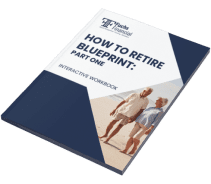The basis of retirement planning is that you work, save, then enjoy the savings in your golden years. However, there is more than meets the eye. The idea of retirement is built around doing what you wanted to do while working but did not have the time or the free resources. That is money. As such, financial security is very critical during retirement. One of the ways to achieve this financial security is by planning your retirement.
This article will help you understand how to plan, what retirement planning is, how to create a retirement plan, and the best retirement investments available. Keep reading to learn more.
How to plan for retirement
If the idea of retiring is denying you sleep, take that as a hint to start planning for it, regardless of your age.
Factors to consider on how to plan for retirement
The following are factors you should consider on how to plan retirement.
When do you want to retire
This is the first step towards planning to retire. Do you plan to work until the age of 65? Are you planning an early retirement, or will you work until when you are 70 years? Identifying the age at which you wish to retire will help you determine how much money you will need.
If you work past the age of 65 years, your investments will have more time to grow. In addition, you will have reduced the years of retirement and a significant amount of money the amount you would need during retirement. On the other hand, retiring early means that you will limit the growth of your investment and that you will need more money to run you throughout your old age.
Medical care expenses at old age
You are planning your retirement at the age of 35- 65. However, you will reap the benefits most probably after retirement-65 years. It is therefore imperative that you understand the medical expenses that come with aging. Older people are prone and vulnerable to chronic diseases that are very expensive to either treat or manage. If not adequately planned for in your retirement plan, the medical expenses may overwhelm your retirement money.
Therefore, considering medical costs will help you prepare for medical insurance to achieve an overall reliable retirement plan.
Where do you plan to live
The cost of living in the area you would like to settle during retirement will directly affect your day-to-day expenses. You, therefore, want to make sure you can live in an affordable neighborhood depending on your savings and retirement investments .
Debts
You should pay off your debts as you near your retirement. Calculate the amount of debt you have accumulated and identify sources of income that you will use to clear the debt.
Retirement Planning
Successful financial planning for retirement will require a good retirement plan. The next part of this article will give you detailed insights to get you started with your retirement planning.
What is Retirement Planning?
Retirement planning is a term that refers to the process of identifying your retirement goals and financial strategies that will enable you to achieve these goals. Ideally, retirement planning is a lifelong process that entails identifying your sources of income, determining your expense, starting on a savings and investment plan, and finally distributing the savings to your goals.

Steps to create your retirement plan
We recommend that you start your retirement plan early. Consider factoring it in in your financial freedom plan. However, if you are to get yet started, you can start today. The 5-10 years preceding your retirement can make a huge difference if you implement a good retirement plan. Here are steps on how to plan for retirement.
Step 1: Determine how much money you need
Once you have established your retirement goals, like the neighborhood you want to live in, the countries you want to visit, and when you want to retire, it is time to calculate how much you would need for that.
In recent times, the cost of living has been increasing every year. It would be a grave mistake to follow the common belief that you will only need 70%- 80% of your income to cover your expenses while in retirement. To be safe, always plan for a higher cost of living in the future. Be careful not to overestimate the cost of living in the future. If you do, you may budget your savings so that you cannot afford your most desired goals. Alternatively, if you underestimate your savings, the money may not be enough to last you your entire retirement period.
By now, you are most probably worried about calculating your retirement savings. We get it; nobody enjoys calculations. That is why we have made your life easier by using the retirement calculator. Let’s find out how it works.
How to calculate your retirement savings using a retirement calculator
A retirement calculator will help you know if you are on track to achieving your retirement goals depending on your savings. Here is how you calculate your retirement savings.
- Calculate your total annual living expense. Remember to factor in inflation and deduct expenses like school fees, transportation to work, and the already paid off mortgage, among other bills.
- Calculate how much you will get from your expected social security benefits and any pension income you expect to receive. You can find information on your expected social security income from your latest social security statement.
- Subtract the total social security benefits and expected pension from the total annual living expense to get your estimated net annual living expenses.
- Multiply the resultant net annual living expense by 25-30 to establish the total amount of savings you will need for the entire retirement period. If you plan to retire early, consider multiplying your estimated net annual living expense by a higher number.
- Once you have determined the total savings you will need for retirement, we recommend applying the 4% rule. That is, do not withdraw more than 4% of your total savings in a year. If you follow this procedure, your retirement savings can afford your desired lifestyle and last about 30 years.
Step 2: Decide how you will invest your savings.
Saving money is a crucial step towards creating a reliable retirement plan. However, savings alone are not enough. You need to invest your money. Take, for example, you open a savings account and deposit $100. In a year, the amount will be constant except for the bank charges deductions. However, when you invest the same amount ($100) in a year, depending on the rate, it may grow to 110%. Therefore, it is important you consider a retirement investment plan for your total retirement savings to harness the power of compounding.
The most common way to invest your retirement savings is by investing in the stock markets. You can also invest your money in bonds and mutual funds. When deciding on the best investments for retirement, consider the rates being offered. The higher the rate, the higher the amount you get annually. That said, note that the returns from your investment will also depend on the amount of savings you have invested.
The best time to start investing in your retirement savings is now. The advantage of time gives your investment room to survive market fluctuations. Moreover, the longer the period of investment, the greater the returns.
There are many investment accounts and retirement plans to help you with your retirement investment plan. However, before settling on the best retirement plan, we recommend having some money in cash. The stock market and mutual funds work best when they are long-term investments.
As such, you need to ensure that you have some liquidity in case of emergencies as you wait for your investment to grow. That is why you need to stash away about 3-6 months’ worth of expenses in a savings account. If you have already retired, consider holding at least 3-6 years’ worth of savings in a savings account to help you with your expenses. Once you have done that, you can now choose a retirement plan that fits your retirement strategies.

The best retirement plan to consider
Choosing a good retirement plan is one of the best retirement investments strategy to implement. There are many types of retirement plans grouped into
- Employer-sponsored retirement plan
- Individual retirement accounts (IRAs) and
- Self-employed retirement plans
- Pension Plans
Employer-sponsored retirement plans
As the name suggests, each of these retirement plans is sponsored by the employer. As such, they have the advantage of employer-matched contributions. What does this mean?
Well, it means that if you contribute 5% of your annual income to your retirement plan, your employer may match that amount and deposit an equal contribution. Your money will therefore have an added 5% amount that grows per the stated rates.
Retirement experts recommend that you contribute at least 10% of your annual income. This type of retirement plan is very favorable for the young employed population. We recommend that you take advantage of it Employer-sponsored retirement plans are;
401(k) plan
This retirement plan allows the employee to contribute to the savings. At the time, the savings are not considered taxable. They, therefore, grow tax-free. However, at retirement, when you withdraw the savings, they are subjected to tax.
However, should you choose to withdraw your savings from this plan before the age of 59 ½, the money will be subjected to taxes and other possible penalties. Other than that, please note that you are not guaranteed a loan from your employer’s plan. The investment option is also limited to the funds available in the plan. These are some of the things to consider before choosing a retirement plan.
403 (b) plan
The 403(b) plan works just like the 403(k) plan, except it is only offered by public institutions like schools, churches and charity organizations. We recommend this retirement plan for workers in the sectors mentioned above. With this plan, you can easily access loans.
Similar to the 401(k) plan, in case of an emergency that forces you to withdraw money from this investment plan, the money becomes taxable and vulnerable to any other penalties. Another downside to consider for this plan is that the options for investment are very limited.
457 (b) plan
The 457 (b) plan also works like the 401(k) plan. Initially, the savings are tax-exempted until after retirement, when you need to withdraw the cash. This plan is available to state and local employees as well as some tax-exempt organizations.
The 457(b) plan offers older workers some special catch-up savings. Unlike the 401(k) plan, it will not be subjected to penalties if you withdraw your money from the 457(b) plan before 59 ½ years. Due to this arrangement, it is very difficult to withdraw funds from the 457(b) plan in an emergency.
Before investing in this plan, note that it does not offer employer match, unlike the other two employer-sponsored plans
Individual retirements accounts
The USA government created individual retirement accounts, commonly known as IRAs, to help workers save for their retirement. There are many types of IRAs; let dive in:
Traditional IRA
The traditional IRA is a personal account that helps you save for your retirement without taxing your savings. However, at retirement, when you need to withdraw your money, it becomes subject to tax. Just like the 401(k) plan, should you withdraw your money from the traditional IRA before retirement, your money could be subjected to penalties and taxes.
This retirement plan requires that you invest your money by yourself. They cannot make the investment decision for you. Other than that, it offers a wide range of investment options, including real estate, bonds, stocks, and CDs.
Roth IRA
This is a modern version of IRA. In this plan, you have to pay taxes for the money that goes into your account. However, your contribution and the money you withdraw at retirement will not be subjected to any taxes. Having a Roth IRA account is one of the best investments for retirement you can make. This is because this plan allows you to withdraw your contribution without them being taxed. Flexibility with your savings is something you will need in case of emergencies.
Spousal IRA
The spousal IRA is meant for workers, but it allows their spouses to contribute to the IRA. The requirement for the spouse to contribute is that their retirement plan has to either be a traditional IRA or a Roth IRA. Moreover, their taxable income has to be more than their contribution to the spousal IRA account.
Rollover IRA
After reading this article, you may change your mind and decide to convert your retirement account to maximize the tax benefits. If that is the case, you will need a rollover IRA. As the name suggests, this account helps you roll over money from one account to another. It allows you to convert from a traditional IRA to a 401(k) plan or a Roth IRA. Before deciding to convert your account, take note of the tax liabilities of the process.
Self-employed retirement plans
Self-employed retirement plans are available to business owners. To access the tax advantages of this retirement plan you will need to follow some administrative process. Types of self-employed retirement plans include
Simple IRA
This plan works much like the employer-sponsored plan. The simple IRA plan allows employees to gain matching contributions from the employer. However, in this case, the employee can choose between making a 3% matching contribution or 2%. The latter is if the employer is not contributing to their simple IRA account. Money sent into this account is pre-taxed
SEP IRA
This account is meant for small business owners and their employees. It works like the traditional IRA, except only employers can make contributions to this account. SEP IRA is also open to self-employed individuals
Solo 401(k) plan
This retirement plan is built for business owners and their spouses. If you run your business solo, without other employees, this retirement plan Is a better option than SEP IRA.
Pension Plans
These retirement plans are also known as defined benefit plans. Pension plans provide a predictable, defined amount of income monthly. There are many types of pension plans. They include
Cash balance plans
This type of pension plan guarantees the employer a set amount of money after retirement instead of a monthly income.
Pensions
Pensions provide retirement income through a calculated formula. The formula considers your years of employment with the employer as well as your total earnings. The resulting amount will be sent to the employee once they reach a specified age, in specified periods, until they die.
Step 3: Calculate after-tax rate of investment return
Now that you know the retirement plan for your investments, choose one that fits your needs. Depending on the type of retirement plan you select, calculate the after-tax rate of investment return.
Different retirement plans are taxed differently. Therefore, it is important that you choose a plan that will favor you regarding taxing. This is especially if your current income or retirement savings will subject you to the higher tax bracket.
Bottom Line
One of the best retirement strategies is to start early. Get started today with your retirement plan using the information and tips offered in this article. We take pride in seeing you living your best life after retirement.



















